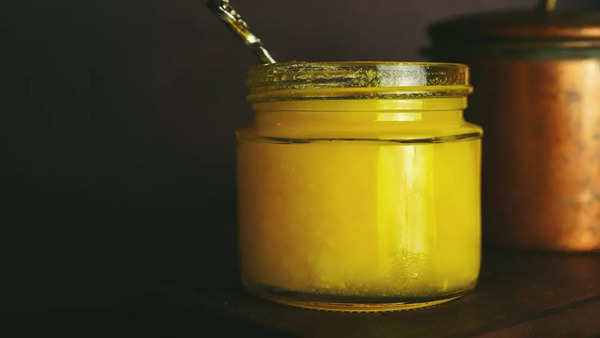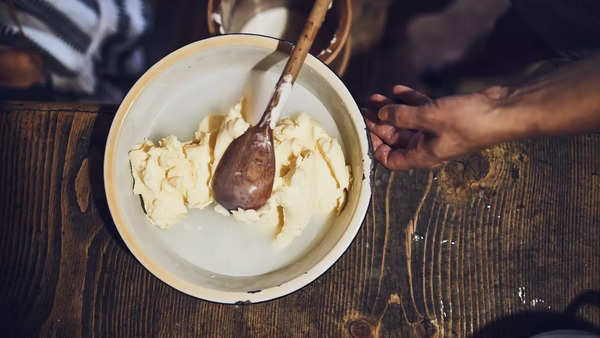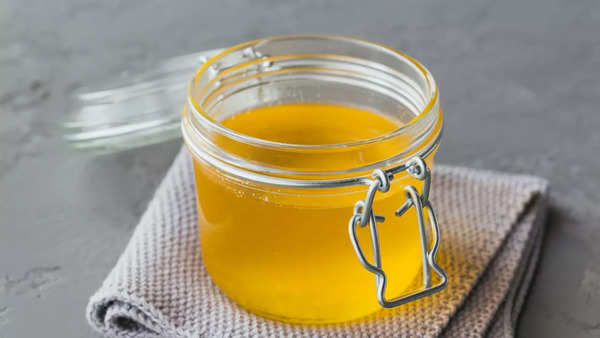The heritage of Bilona ghee
Bilona ghee has its roots deeply embedded in ancient Indian practices.The term ‘Bilona’ refers to the traditional hand-churning method used to produce this ghee. This age-old process involves curdling milk, churning the curd to extract butter, and then heating the butter to obtain ghee. This method is believed to retain the maximum nutritional value and provide a distinct flavour that sets it apart from other types of ghee.
The production process
The meticulous process of making Bilona ghee begins with high-quality milk, preferably from indigenous cow breeds like Gir or Sahiwal, known for their nutrient-rich A2 milk. Here’s a step-by-step breakdown of the traditional Bilona method:
Curdling the Milk – Fresh cow milk is boiled and then cooled to a specific temperature before adding a culture to curdle it. This step is crucial as it lays the foundation for the ghee’s flavour and nutritional profile.
Churning the Curd – The curd is churned using a wooden churner (Bilona) in a slow and rhythmic manner. This process separates the butter (makhan) from the buttermilk. The traditional hand-churning method is labour-intensive and time-consuming, but it ensures that the butter retains its natural properties.

Clarifying the Butter – The extracted butter is then heated on a low flame until all the water evaporates, and the milk solids settle at the bottom. The golden liquid ghee is then carefully strained and stored. This slow-cooking process enhances the ghee’s flavour and aromatic properties.
Health benefits of Bilona ghee
Bilona ghee is often hailed for its numerous health benefits. It contains fat-soluble vitamins A, D, E, and K, essential for various bodily functions and has a high concentration of butyrate, a short-chain fatty acid that supports gut health and reduces inflammation. Well, the clarification process removes lactose and casein, making it suitable for those with dairy sensitivities. It is also said that Ayurveda considers ghee as beneficial for digestion and absorption of nutrients and the mere presence of conjugated linoleic acid (CLA) in Bilona ghee has antioxidant properties that can help in reducing the risk of chronic diseases.

Why Bilona Ghee is considered the best
Several factors contribute to Bilona ghee’s reputation as the best:
Quality of milk: The use of milk from indigenous cow breeds, known for their superior quality, plays a significant role. These cows produce a2 milk, which is richer in nutrients compared to a1 milk commonly found in other dairy products.
Traditional production method: The Bilona method is a labour of love. The traditional churning process and slow-cooking method preserve the nutrients and enhance the flavour, giving Bilona ghee its unique characteristics.
Reasons why ghee is super amazing for you!
Purity and authenticity: Bilona ghee is made without any additives or preservatives, ensuring that what you get is 100 per cent pure ghee. This purity is often compromised in mass-produced ghee.
Aromatic and flavour profile: The traditional method of making Bilona ghee imparts a distinctive nutty aroma and rich flavour, which is hard to replicate with modern methods.
Health benefits: As mentioned earlier, the numerous health benefits associated with Bilona ghee make it a preferred choice for those conscious about their health.

The high cost of Bilona ghee
The price of Bilona ghee is significantly higher than regular ghee, and several factors contribute to this. For starters, the traditional method of making Bilona ghee is highly labour-intensive. From hand-churning the curd to slow-cooking the butter, each step requires time and effort, which adds to the cost. Secondly, using milk from indigenous cow breeds like Gir or Sahiwal is more expensive. These cows are not as productive in terms of milk yield compared to hybrid breeds, making the milk and, consequently, the ghee more expensive. The entire process of making Bilona ghee is time-consuming. Unlike commercial ghee production, which uses machines to speed up the process, the traditional method cannot be rushed if quality is to be maintained.
For those who don’t know, the Bilona method yields less ghee compared to modern methods. For instance, to make 1 litre of Bilona ghee, one might need up to 25-30 liters of milk, whereas commercial methods might require significantly less milk for the same amount of ghee. This is why Bilona ghee is often produced in smaller batches by artisans who uphold traditional methods. This artisanal approach is more costly than mass production.

As more people become aware of the health benefits and superior quality of Bilona ghee, the demand increases. Higher demand, coupled with limited supply due to the intensive production process, drives up the price. Some of the other reasons for this high cost are high-quality, eco-friendly packaging and the costs associated with distributing a niche product.
Consumer perception and market trends
The growing trend towards organic and natural foods has bolstered the popularity of Bilona ghee. Health-conscious consumers are willing to pay a premium for a product that offers purity, health benefits, and superior taste. In markets like the United States and Europe, where Indian cuisine and Ayurveda are gaining popularity, Bilona ghee is increasingly seen as a superfood. This perception is further enhanced by endorsements from nutritionists and health experts who vouch for its benefits.
Challenges in the Bilona ghee market
Despite its popularity, the market for Bilona ghee faces several challenges:
Authenticity concerns: With the rise in demand, there is also an increase in adulterated products claiming to be bilona ghee. Ensuring authenticity is a significant challenge for consumers.
High cost: The high price can be a barrier for many potential buyers, limiting its accessibility.
Education and awareness: Many consumers are still unaware of the differences between bilona ghee and regular ghee. Educating the market about its benefits is crucial for growth.
Supply chain issues: Ensuring a steady supply of high-quality milk from indigenous cow breeds is a logistical challenge.
ALSO READ: The pros and cons of having ghee everyday
Future outlook
The future of Bilona ghee looks promising, with growing awareness and appreciation for traditional and organic products. As consumers become more health-conscious, the demand for authentic, high-quality ghee is likely to increase. To sustain this growth, producers need to focus on maintaining authenticity, expanding educational efforts about the benefits of Bilona ghee, and possibly finding ways to make the production process more efficient without compromising quality.
Bilona ghee stands out as the best due to its traditional production methods, superior quality ingredients, and numerous health benefits. While its high price is a reflection of the labour-intensive process and the premium quality of the ingredients used, it remains a worthwhile investment for those seeking the best in terms of flavour and nutrition. As the market for natural and traditional products continues to grow, Bilona ghee is well-positioned to become even more popular worldwide.






